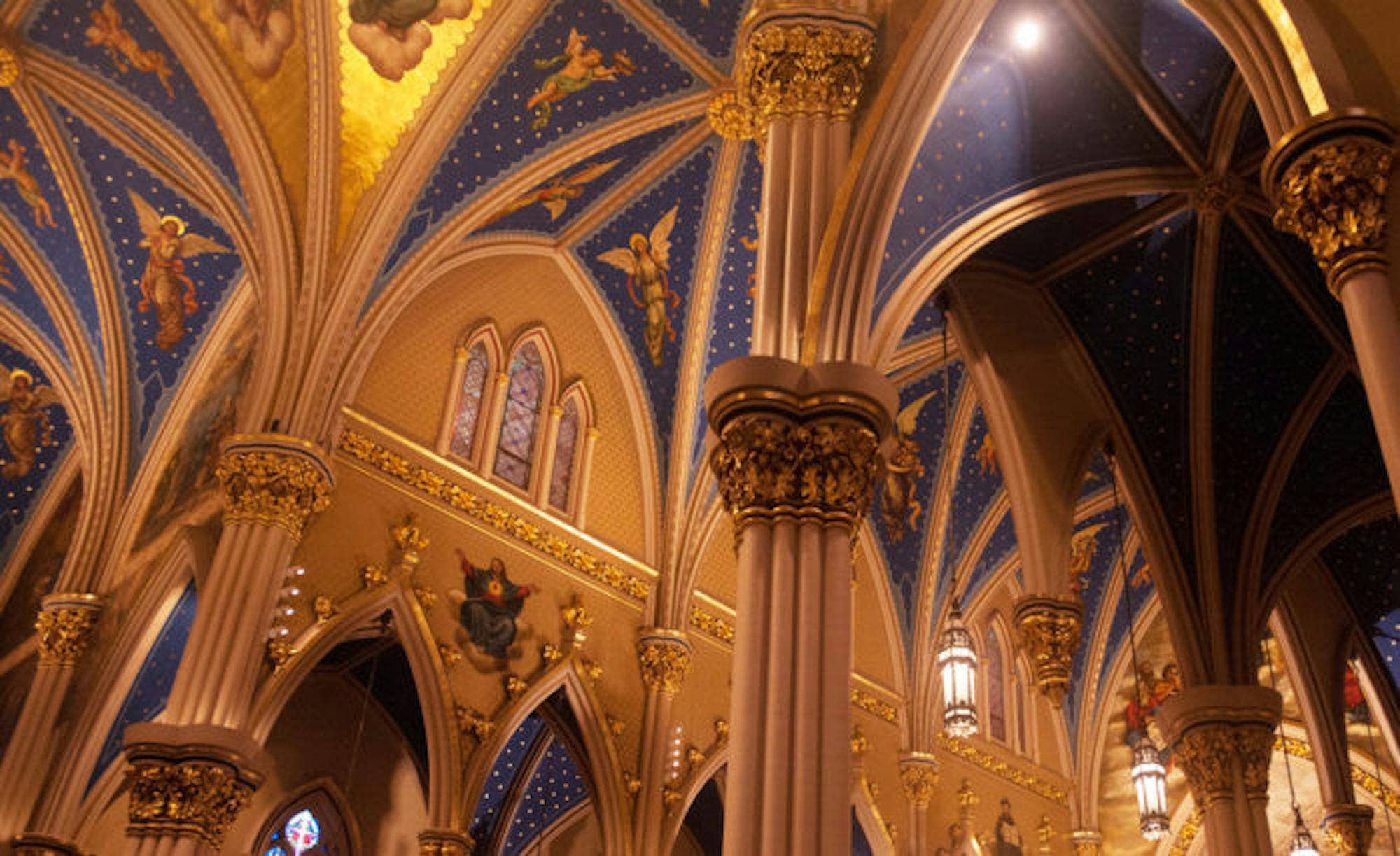While Notre Dame has many recognizable landmarks, few campus buildings have played a role as important as the Basilica of the Sacred Heart. One of the center pieces of God Quad, the Basilica has had a huge influence on Notre Dame as an institution, Fr. Peter Rocca, CSC, the Basilica’s rector of 21 years, said.
“Notre Dame would be a much different place if we didn’t have the Basilica of the Sacred Heart,” he said. “It is a powerful symbol that has touched the lives of literally millions of people. And it's something that people will remember for a long time.”

Rocca said the Basilica’s past is tied to the first place of worship on Notre Dame’s campus.
“When Fr. Sorin arrived here in 1842, there was really nothing here except a log chapel, built around 1830 by the first priest ordained in the United States: Fr. Stephen Theodore Badin — as in Badin Hall. Fr. Badin built this chapel so he could minister to the Native American population here,” he said.
Sue Montalbano, coordinator of Basilica tours, said Sorin and the monks who accompanied him adopted the chapel as a place of worship, but it quickly became too small for their growing community. It was at this point that the Holy Cross community built the first church on the site of the current Basilica, Sacred Heart One, constructed in 1848.
“After the Civil War, men started coming back from the war and [Sacred Heart One] became too small,” Montalbano said.
Construction began on the current structure in 1868 and, though it was consecrated in 1888, it was not completed until the addition of the spire in 1892, Rocca said. He added that the design and construction of the church distinguish it as a quintessential product of the then-young University.
Montalbano said after rejecting expensive proposals from an architect, Sorin and the Holy Cross community assumed responsibility for the church’s design.
“[Sorin] built his own church,” she said.
Basilica tour guide Patti Olive said the materials used to build the Basilica originated at Notre Dame.
“Fr. Sorin wanted to use natural resources, so the composite of the church is brick and plaster and wood, and the bricks were made by Holy Cross brothers who were here during the time of the construction of the church,” she said. “They had a kiln set up next to St. Mary’s Lake, and they used the silt from the bottom of the lake to make the bricks for the building.”
Olive said other features of the church have their own histories. The stained glass windows that fill the Basilica were the work of French Carmelite nuns, whom Sorin had celebrated mass with in Le Mans, France.
The murals that decorate the ceiling of the church, as well as the Stations of the Cross, were the work of Italian painter Luigi Gregori, who was also responsible for the Christopher Columbus murals in the Main Building and the art on the interior of the Dome.
Rocca said the Basilica has housed several significant events over the years, including the funeral of Knute Rockne in 1931. Rocca said Rockne’s funeral was also the beginning of one of Notre Dame’s most enduring traditions.
“[At the funeral] ‘Notre Dame Our Mother’ was sung for the first time,” he said. “The words were written by Fr. Charles O’Donnell, who had been a chaplain in World War I, and became president of Notre Dame.”
O’Donnell also played a key role in the addition of the famous Memorial Door in the 1920s. Known for the inscription “God, Country, Notre Dame” above it, the door was added as a tribute to Notre Dame students killed in World War I. Just inside the door hangs a light fixture made from a helmet worn by O’Donnell during the war.
Though the Basilica looks much as it did in the late nineteenth century, it has undergone notable changes through the years, including alterations that were made in the wake of the Second Vatican Council.
Speaking on the most significant renovation, Rocca added his favorite addition to the Church.
“The major one was around 1990 when the whole church was closed for around 14 months to be restored,” he said. “They put in air conditioning — thank you Jesus.”
In 1992, then-Pope John Paul II designated the church of the Sacred Heart as a basilica. Montalbano said the defining characteristics of a basilica are embodied by Sacred Heart.
“A basilica is a place of worship … a place of history … and a place of pilgrimage,” she said.
Rocca, Montalbano and Olive all identified the church as the spiritual center of campus.
“I would say one thing to take away from the Basilica is that it is the heart and soul of the university,” Rocca said. “I mean, what would Notre Dame be without a university church? There are a lot of universities where there is no central place of worship that speaks to what is most fundamental, and at the heart of the lives of students. I think the Basilica does that.”













